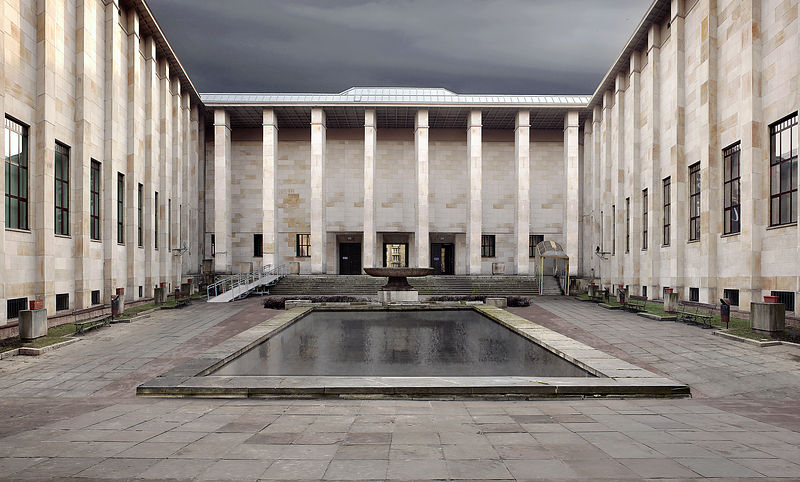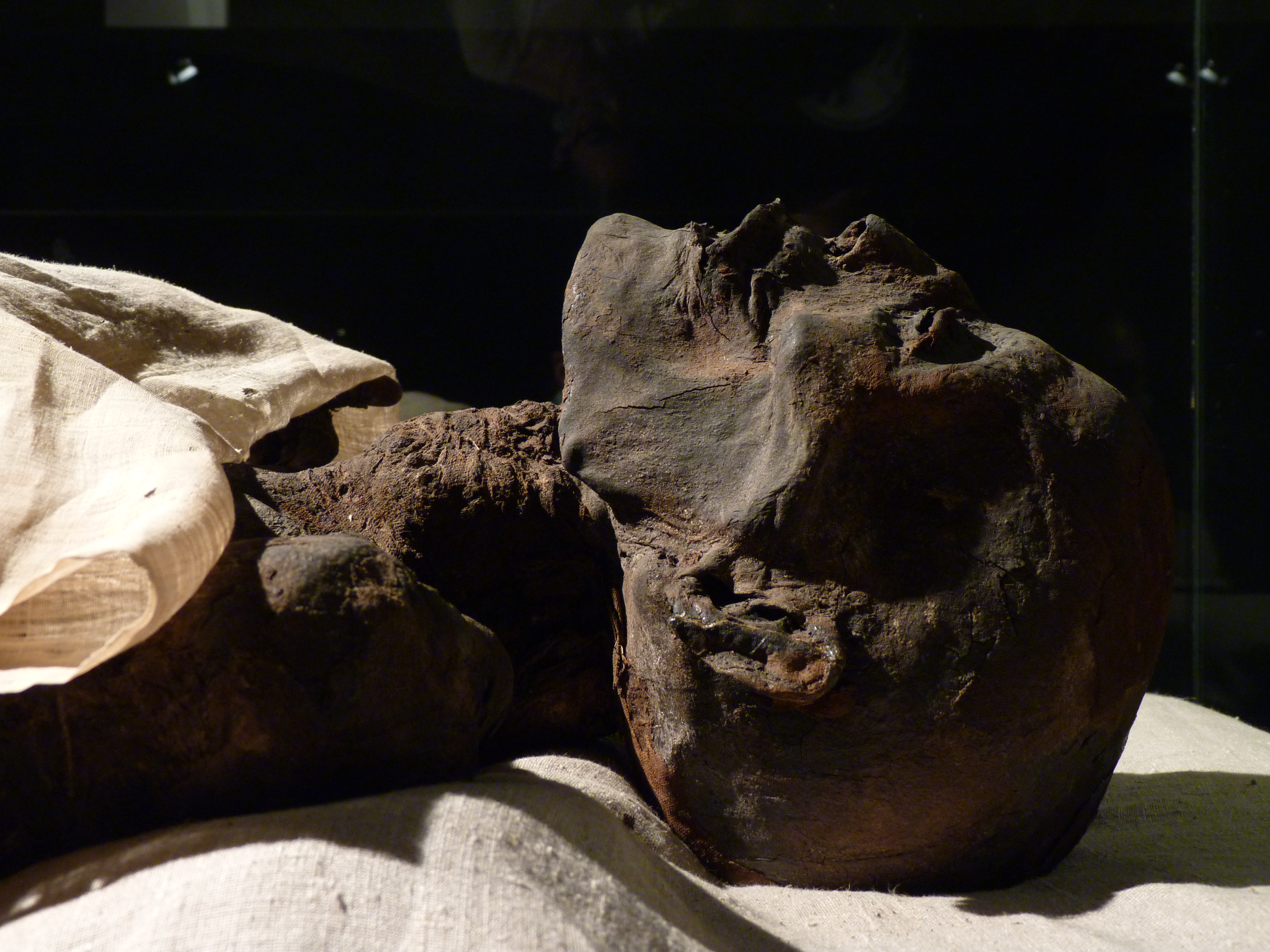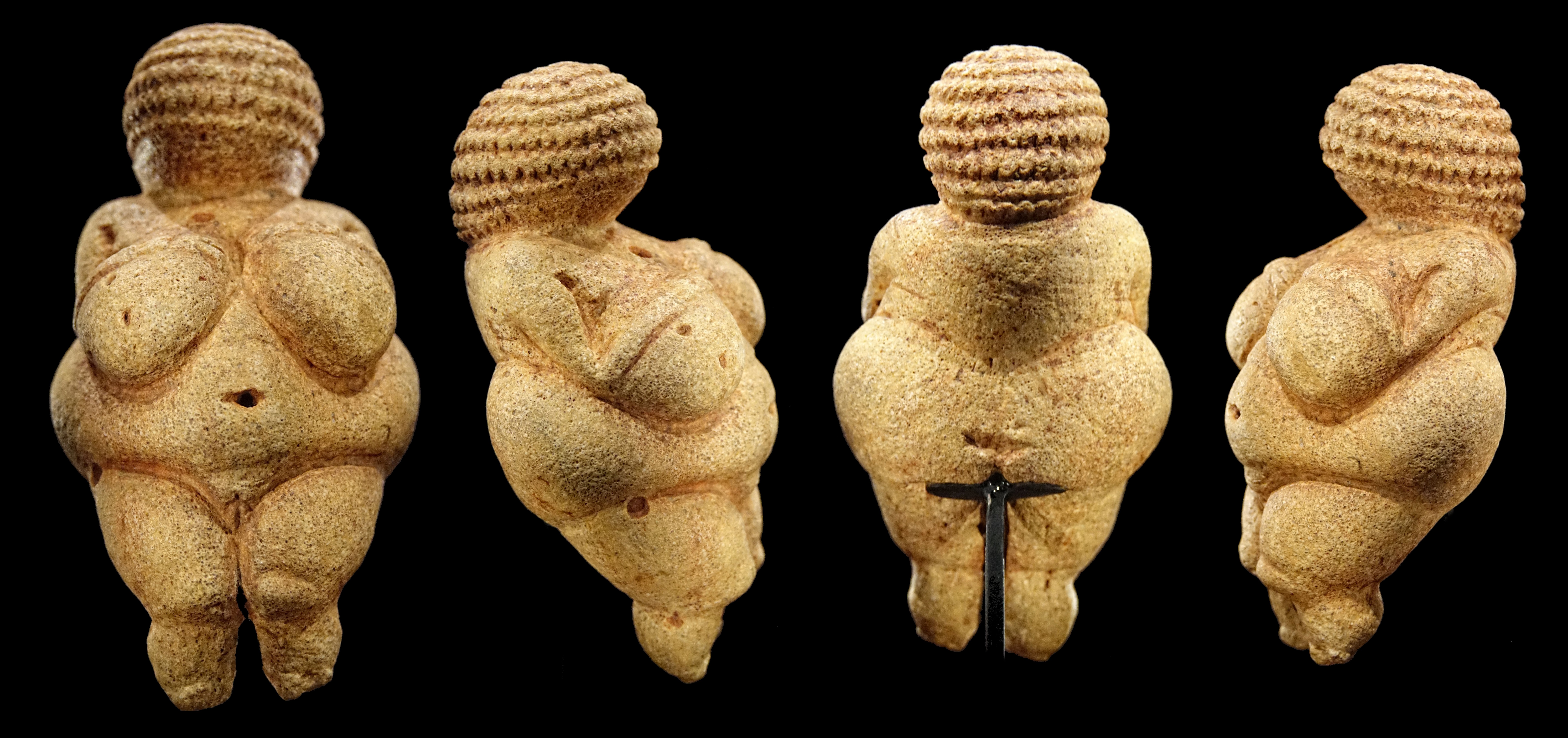|
Archaeological Museum Of Kraków
The Archaeological Museum of Kraków ( pl, Muzeum Archeologiczne w Krakowie) is a historic museum in Kraków, Lesser Poland Voivodeship, Poland. It was established in 1850. History The Archaeological Museum in Kraków is the oldest archaeological museum in Poland. It was founded as the Muzeum of Antiquity, by a group of intellectuals and academics who belonged to the Kraków Scientific Society (''Towarzystwo Naukowe Krakowskie'', TNK) during the Partitions of Poland. The foreign rule in the Austrian Partition prohibited the existence of Polish patriotic organizations except for the learning societies like the TNK; which in turn, set up a museum as centre of Polish socio-cultural activities. The TNK society which sponsored the museum foundation, existed in Kraków since 1816. It has formed its own Division of Art and Archeology in 1848. The founding act was signed on 18 February 1850 by the Committee which included such notable personalities as Director of the Jagiellonian Libra ... [...More Info...] [...Related Items...] OR: [Wikipedia] [Google] [Baidu] |
Kraków
Kraków (), or Cracow, is the second-largest and one of the oldest cities in Poland. Situated on the Vistula River in Lesser Poland Voivodeship, the city dates back to the seventh century. Kraków was the official capital of Poland until 1596 and has traditionally been one of the leading centres of Polish academic, economic, cultural and artistic life. Cited as one of Europe's most beautiful cities, its Old Town with Wawel Royal Castle was declared a UNESCO World Heritage Site in 1978, one of the first 12 sites granted the status. The city has grown from a Stone Age settlement to Poland's second-most-important city. It began as a hamlet on Wawel Hill and was reported by Ibrahim Ibn Yakoub, a merchant from Cordoba, as a busy trading centre of Central Europe in 985. With the establishment of new universities and cultural venues at the emergence of the Second Polish Republic in 1918 and throughout the 20th century, Kraków reaffirmed its role as a major national academic an ... [...More Info...] [...Related Items...] OR: [Wikipedia] [Google] [Baidu] |
Bronocice Pot
The Bronocice pot is a ceramic vase incised with one of the earliest known depictions of what may be a wheeled vehicle. It was discovered in the village of Bronocice near the Nidzica River in Poland. Attributed to the Funnelbeaker archaeological culture, radiocarbon tests dated the pot to the mid-fourth millennium BCE. Today it is housed at the Archaeological Museum of Kraków in southern Poland. Discovery The pot was discovered between 1974 and 1976 during the archaeological excavation of a large Neolithic settlement in Bronocice, ca. 50 km to north east of Kraków. The excavations were carried out between 1974 and 1980 by the Institute of Archaeology and Ethnology, Polish Academy of Sciences and the State University of New York at Buffalo (United States). Sarunas Milisauskas, one of several archaeologists who worked on Bronocice excavation project wrote: "The 1974 field season yielded data beyond our expectations. An incised wagon motif was found on a Funnelb ... [...More Info...] [...Related Items...] OR: [Wikipedia] [Google] [Baidu] |
Archaeological Museums In Poland
Archaeology or archeology is the scientific study of human activity through the recovery and analysis of material culture. The archaeological record consists of artifacts, architecture, biofacts or ecofacts, sites, and cultural landscapes. Archaeology can be considered both a social science and a branch of the humanities. It is usually considered an independent academic discipline, but may also be classified as part of anthropology (in North America – the four-field approach), history or geography. Archaeologists study human prehistory and history, from the development of the first stone tools at Lomekwi in East Africa 3.3 million years ago up until recent decades. Archaeology is distinct from palaeontology, which is the study of fossil remains. Archaeology is particularly important for learning about prehistoric societies, for which, by definition, there are no written records. Prehistory includes over 99% of the human past, from the Paleolithic until the advent of ... [...More Info...] [...Related Items...] OR: [Wikipedia] [Google] [Baidu] |
Museums Established In 1850
A museum ( ; plural museums or, rarely, musea) is a building or institution that cares for and displays a collection of artifacts and other objects of artistic, cultural, historical, or scientific importance. Many public museums make these items available for public viewing through exhibits that may be permanent or temporary. The largest museums are located in major cities throughout the world, while thousands of local museums exist in smaller cities, towns, and rural areas. Museums have varying aims, ranging from the conservation and documentation of their collection, serving researchers and specialists, to catering to the general public. The goal of serving researchers is not only scientific, but intended to serve the general public. There are many types of museums, including art museums, natural history museums, science museums, war museums, and children's museums. According to the International Council of Museums (ICOM), there are more than 55,000 museums in 202 ... [...More Info...] [...Related Items...] OR: [Wikipedia] [Google] [Baidu] |
Museums In Poland
The Minister of Culture and National Heritage of Poland may inscribe a Polish museum into the National Register of Museums ( pl, Państwowy Rejestr Muzeów) in order to confirm the high level of its cultural activity and the importance of its collection. Only those museums that meet the required criteria – including importance of the museum's collection, a team of well qualified employees, an adequate building, and a permanent source of financing – may be entered into the register. Such museums are known as registered museums (). A registered museum that no longer meets the criteria may be removed from the register. Registered museums enjoy certain privileges that other museums in Poland do not. A registered museum has the right of pre-emption for artefacts offered for sale by antique traders and at auctions. Directors of registered museums elect triennially from among themselves eleven out of 21 members of the Museums Council (), which advises the Minister of Culture and Na ... [...More Info...] [...Related Items...] OR: [Wikipedia] [Google] [Baidu] |
Viking
Vikings ; non, víkingr is the modern name given to seafaring people originally from Scandinavia (present-day Denmark, Norway and Sweden), who from the late 8th to the late 11th centuries raided, pirated, traded and settled throughout parts of Europe.Roesdahl, pp. 9–22. They also voyaged as far as the Mediterranean, North Africa, Volga Bulgaria, the Middle East, and North America. In some of the countries they raided and settled in, this period is popularly known as the Viking Age, and the term "Viking" also commonly includes the inhabitants of the Scandinavian homelands as a collective whole. The Vikings had a profound impact on the early medieval history of Scandinavia, the British Isles, France, Estonia, and Kievan Rus'. Expert sailors and navigators aboard their characteristic longships, Vikings established Norse settlements and governments in the British Isles, the Faroe Islands, Iceland, Greenland, Normandy, and the Baltic coast, as well as ... [...More Info...] [...Related Items...] OR: [Wikipedia] [Google] [Baidu] |
Ostrogoths
The Ostrogoths ( la, Ostrogothi, Austrogothi) were a Roman-era Germanic people. In the 5th century, they followed the Visigoths in creating one of the two great Gothic kingdoms within the Roman Empire, based upon the large Gothic populations who had settled in the Balkans in the 4th century, having crossed the Lower Danube. While the Visigoths had formed under the leadership of Alaric I, the new Ostrogothic political entity which came to rule Italy was formed in the Balkans under the influence of the Amal dynasty, the family of Theodoric the Great. After the death of Attila and collapse of the Hunnic empire represented by the Battle of Nedao in 453, the Amal family began to form their kingdom in Pannonia. Byzantine Emperor Zeno played these Pannonian Goths off against the Thracian Goths, but instead the two groups united after the death of the Thracian leader Theoderic Strabo and his son Recitach. Zeno then backed Theodoric to invade Italy and replace Odoacer there, whom he h ... [...More Info...] [...Related Items...] OR: [Wikipedia] [Google] [Baidu] |
Mummy
A mummy is a dead human or an animal whose soft tissues and organs have been preserved by either intentional or accidental exposure to chemicals, extreme cold, very low humidity, or lack of air, so that the recovered body does not decay further if kept in cool and dry conditions. Some authorities restrict the use of the term to bodies deliberately embalmed with chemicals, but the use of the word to cover accidentally desiccated bodies goes back to at least 1615 AD (see the section Etymology and meaning). Mummies of humans and animals have been found on every continent, both as a result of natural preservation through unusual conditions, and as cultural artifacts. Over one million animal mummies have been found in Egypt, many of which are cats. Many of the Egyptian animal mummies are sacred ibis, and radiocarbon dating suggests the Egyptian Ibis mummies that have been analyzed were from time frame that falls between approximately 450 and 250 BC. In addition to the mumm ... [...More Info...] [...Related Items...] OR: [Wikipedia] [Google] [Baidu] |
Wawel Hill
The Wawel Royal Castle (; ''Zamek Królewski na Wawelu'') and the Wawel Hill on which it sits constitute the most historically and culturally significant site in Poland. A fortified residency on the Vistula River in Kraków, it was established on the orders of King Casimir III the Great and enlarged over the centuries into a number of structures around an Italian-styled courtyard. It represents nearly all European architectural styles of the Medieval, Renaissance and Baroque periods. The castle is part of a fortified architectural complex erected atop a limestone outcrop on the left bank of the Vistula River, at an altitude of 228 metres above sea level.Dr. Jan Urban, "Geological foundation of Kraków"retrieved from the Internet Archive, May 21, 2008 The complex consists of numerous buildings of great historical and national importance, including the Wawel Cathedral where Polish monarchs were crowned and buried. Some of Wawel's oldest stone buildings can be traced back to 970 ... [...More Info...] [...Related Items...] OR: [Wikipedia] [Google] [Baidu] |
Wheel
A wheel is a circular component that is intended to rotate on an axle bearing. The wheel is one of the key components of the wheel and axle which is one of the six simple machines. Wheels, in conjunction with axles, allow heavy objects to be moved easily facilitating movement or transportation while supporting a load, or performing labor in machines. Wheels are also used for other purposes, such as a ship's wheel, steering wheel, potter's wheel, and flywheel. Common examples are found in transport applications. A wheel reduces friction by facilitating motion by rolling together with the use of axles. In order for wheels to rotate, a moment needs to be applied to the wheel about its axis, either by way of gravity or by the application of another external force or torque. Using the wheel, Sumerians invented a device that spins clay as a potter shapes it into the desired object. Terminology The English word '' wheel'' comes from the Old English word , from Proto-Germanic ... [...More Info...] [...Related Items...] OR: [Wikipedia] [Google] [Baidu] |
Ceramic
A ceramic is any of the various hard, brittle, heat-resistant and corrosion-resistant materials made by shaping and then firing an inorganic, nonmetallic material, such as clay, at a high temperature. Common examples are earthenware, porcelain, and brick. The earliest ceramics made by humans were pottery objects (''pots,'' ''vessels or vases'') or figurines made from clay, either by itself or mixed with other materials like silica, hardened and sintered in fire. Later, ceramics were glazed and fired to create smooth, colored surfaces, decreasing porosity through the use of glassy, amorphous ceramic coatings on top of the crystalline ceramic substrates. Ceramics now include domestic, industrial and building products, as well as a wide range of materials developed for use in advanced ceramic engineering, such as in semiconductors. The word "'' ceramic''" comes from the Greek word (), "of pottery" or "for pottery", from (), "potter's clay, tile, pottery". The earliest k ... [...More Info...] [...Related Items...] OR: [Wikipedia] [Google] [Baidu] |
.jpg)





